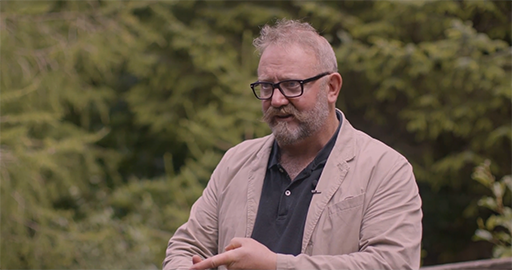3.3 Reducing your carbon emissions
It is unequivocal that human influence has warmed the atmosphere, ocean and land. Widespread and rapid changes in the atmosphere, ocean, cryosphere and biosphere have occurred.
The above quote from the Intergovernmental Panel on Climate Change (IPCC) report highlights the impact of human activity on climate change, and many consider we are facing a climate emergency. The need to start to mitigate the impact of our activities and behaviours is now essential. As you have seen in the previous sections developing global goals, national legislative acts and setting targets provides a framework to drive change.
In this collection we have started to introduce you to think about sustainability, further resources are available in the Open University Sustainability Hub [Tip: hold Ctrl and click a link to open it in a new tab. (Hide tip)] on OpenLearn.
While you may be familiar with many key terms and concepts related to climate change, in this section we provide an overview of some of the terms that are frequently used. You may also wish to bookmark the IPCC Special Report: Global Warming of 1.5 ºC glossary, which provides a comprehensive list of definitions.
Climate change
The United Nations Framework Convention on Climate Change defines climate change as:
‘Climate change’ means a change of climate which is attributed directly or indirectly to human activity that alters the composition of the global atmosphere and which is in addition to natural climate variability observed over comparable time periods.
Net zero
Net zero is achieving the balance between the carbon emitted into the atmosphere and the amount removed from the atmosphere.
In the video Stephen Peake, Professor of Climate Change and Energy at The Open University, provides an overview of net zero.

Transcript
Global warming
Global warming is the long-term increase in temperature of the Earth’s surface due to human activities, which increase greenhouse gases that have the potential to warm and change our global climate.
In the video Stephen Peake provides an overview of global warming.

Transcript
Greenhouse gas emissions
The Greenhouse Gas (GHG) Protocol is a global framework to measure and manage greenhouse gas emissions to enable corporate accounting and reporting standards for greenhouse gas emissions from organisations.
The greenhouse gas emissions are grouped into three ‘scopes’ shown in the table and figure below. Scope 1 and 2 require mandatory reporting by organisations. Scope 3 emissions can be challenging to determine, but account for approximately 80% of organisations emission.
Scope 1 Direct emissions |
Scope 2 Indirect emissions |
Scope 3 All other indirect emissions |
|---|---|---|
| From sources that are controlled or owned by an organisation. | From the purchase of electricity, steam, heat or cooling. | Emissions generated by an organisations supply and value chain. |
Fuel combustion Company vehicles Company facilities |
15 categories
|
Footnotes
Based on information from the GHG Protocol websiteIn the video Scott Stonham, an Independent Sustainable Tech Analyst and author of the Jisc Exploring digital carbon footprints report, explains the GHG Protocol.

Transcript
Carbon footprint
A carbon footprint is a measure of the greenhouse gases (GHG) that are produced directly or indirectly by the activities of an individual, organisations and community, and the activities for producing products.
In the video Stephen Peake explains what a carbon footprint is.

Transcript
If you wish to understand more about your own carbon footprint, you can use The Open University’s Carbon Calculator on OpenLearn.
The circular economy
The circular economy is a framework to tackle global challenges including climate change that is based on three principles:
- Eliminate waste and pollution
- Circulate products and materials
- Regenerate nature
In the video Dr Alice Moncaster, Senior Lecturer in Sustainable Built Environment at The Open University, provides an overview of the circular economy.

Transcript
There is a growing focus on the circular economy, an area you may wish to come back to explore further. The Beyond Recycling area of the Welsh Government website, that includes its strategy to make the circular economy in Wales a reality, and the wellbeing assessment, provides an insight into what organisation need to consider to develop more sustainable ways reduce waste and preserve resources.

